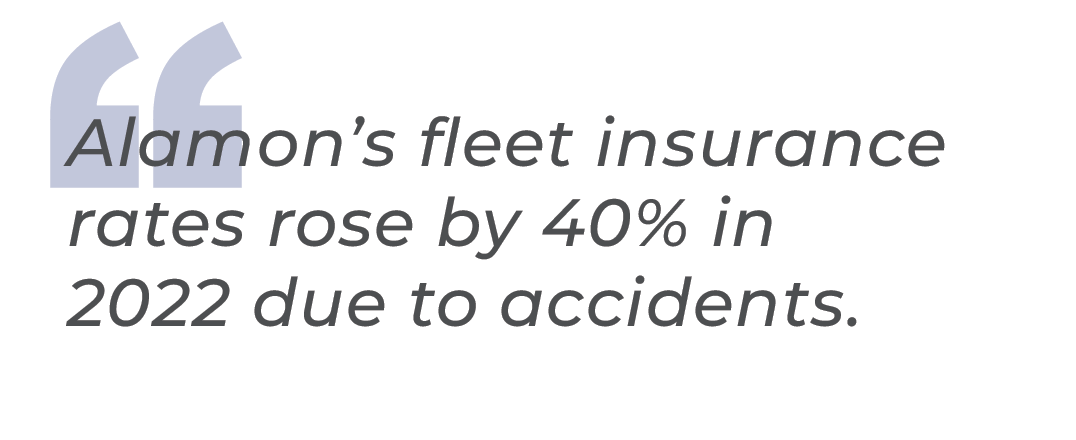The High Cost of Distracted Driving
AND THE DISTRACTED DRIVING QUIZ
It only takes a second, but taking your focus off of driving, no matter how briefly, can be extremely costly.
Whether you’re glancing at a text, searching for a radio station, or rummaging through the console for an address you wrote on a piece of paper, distracted driving is dangerous. It often leads to accidents, skyrocketing insurance rates, injuries and death.
Alamon has a strong commitment to safety, and it includes driving safely. All employee-owners have a responsibility to adhere to safe driving practices in company vehicles at all times.
While there are multiple ways for drivers to be distracted from driving, the most common way is to use mobile phones while on the road.
According to the National Highway Traffic Safety Administration (NHTSA), in 2019, there were 846 fatalities in crashes involving cell phones as distractions. An additional 26,000 people were injured in crashes that were linked to cell phone related distractions.
There are three primary types of distraction that interfere with safe driving.
Test your knowledge about safe driving with this quick three-question quiz.
Just as there are multiple ways you can become distracted while driving, there are multiple ways auto accidents can affect Alamon’s business (none of them in a good way).

All Alamon fleet vehicles will soon be equipped with forward facing cameras.
FROM THE FLEET MANAGER
Alamon cares about your safety, and we prioritize safety as an important part of our business.
As a tool for improving driver safety, we are in the final stages of installing forward facing cameras in all company owned and rented vehicles. These cameras are both a safety need, as well as a requirement of our auto insurance carrier.
Please note that these cameras are forward facing only and do not record driver activity (neither by video or sound recording) within the vehicle cabs. The camera units do have the ability to produce audio output that includes pre-recorded messages to drivers relative to driving performance. As a result, a driver may hear an audio message while driving directing the driver to fasten his/her seatbelt or to decrease speed. If driving performance is extremely poor, more voice coaching options may be activated to warn drivers about driving too closely to the vehicle in front of them, rolling through stops, braking or turning too harshly and other driving habits requiring improvement.
Thank you in advance for adhering to Alamon’s safety practices.
Don Staggs
-Fleet Manager
Questions? Reach out to don@alamon.com.

 Winter Meetings 2023
Winter Meetings 2023